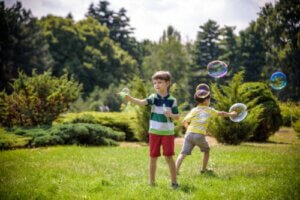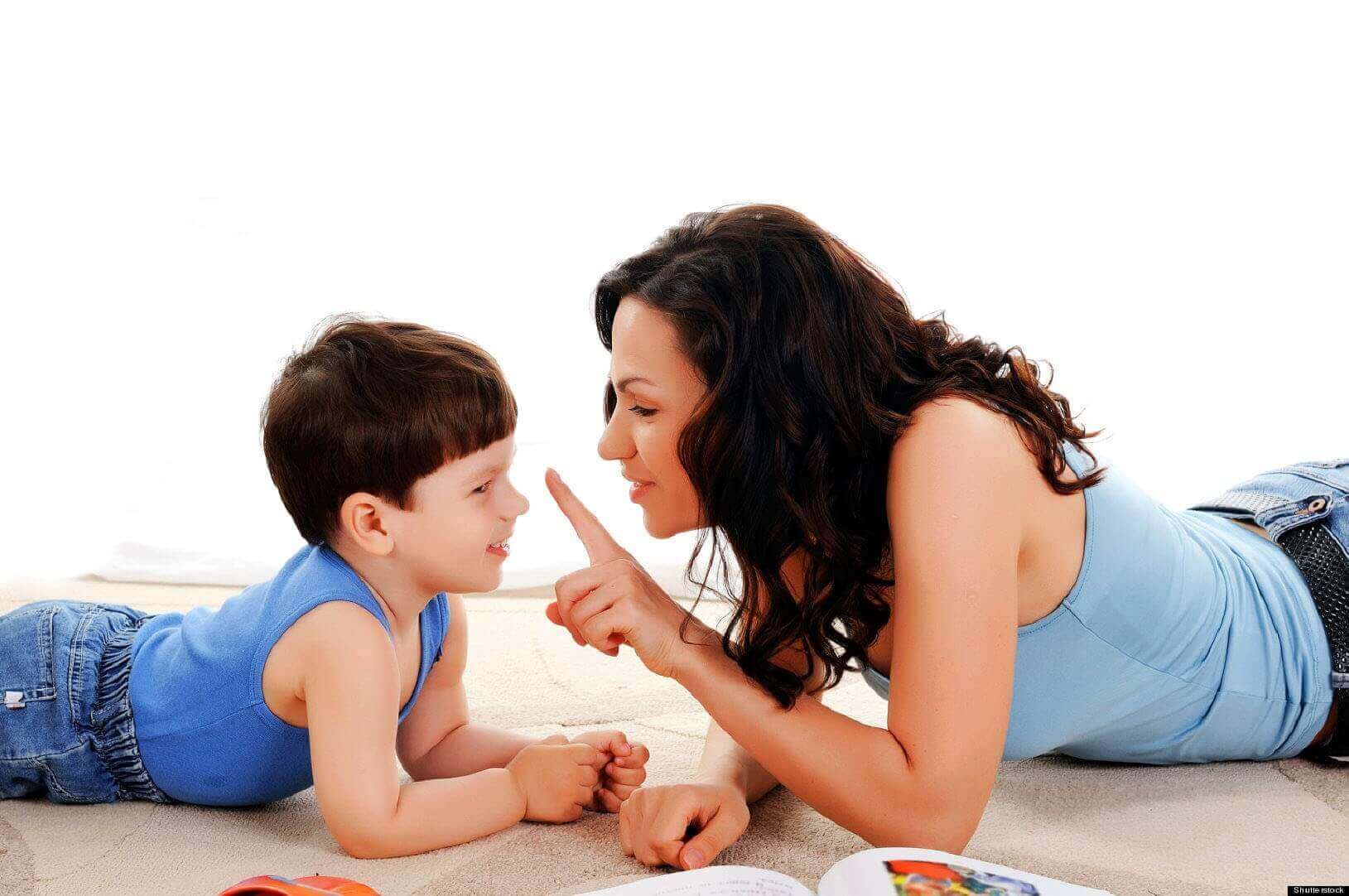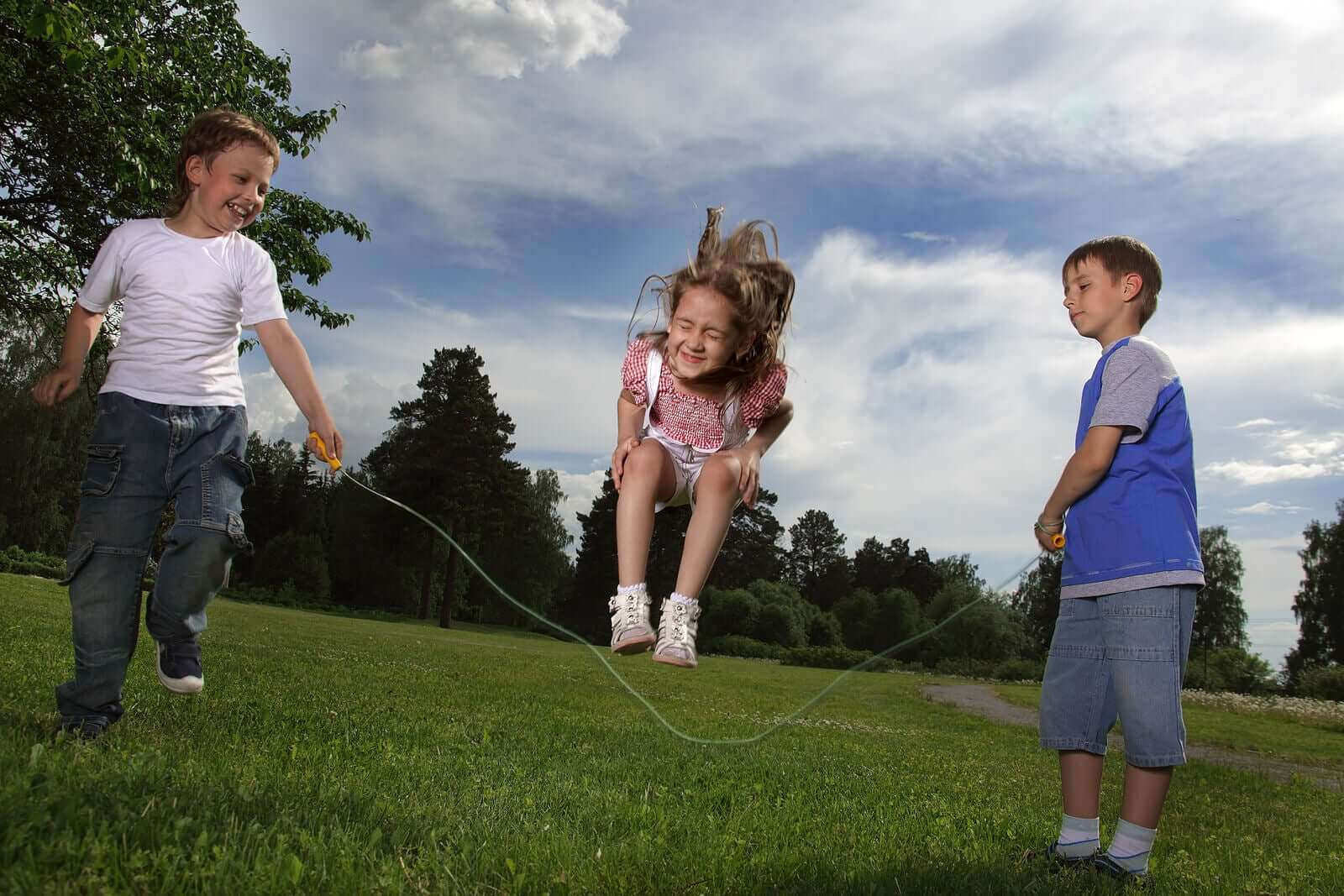10 Children's Activities that Involve Free Movement


Written and verified by the psychopedagogue María José Roldán
Play and free movement are fundamental parts of the growth and development of small children. Therefore, it’s crucial that parents keep this in mind so that, besides having fun as a family, their little ones also develop properly.
Below, we’ll talk about some activities involving free movement for small children that your kids will love!
Activities that involve free movement
Here are some fun activities for children that they can enjoy both at home or at school. You don’t need any sophisticated equipment and you can improvise with many objects that you can find in your house or outdoors.
1. Tumbleweed
You and your children can pretend you’re tumbleweed that rolls and bounces around the desert. To do so, just roll around on the ground or the grass. Or, you can put your arms out and spin.
Rolling is a good way to coordinate the muscles of the back, neck, shoulders, hips, and to develop strength. If you have a slope in your yard or at the park, rolling downhill can be very fun and beneficial.
You can place a blanket on the grass, holding one end. Then, ask children to lie down on the other end, roll themselves up, and then roll back out.

2. What animal am I?
This activity promotes imaginative play and thinking skills, as well as the construction of gross motor skills. In this sense, choose different animals and then try to imitate their movements. Take turns guessing the other person’s animal. Try suggesting different categories to make the game more challenging. For example, animals that jump, fly, run, etc.
Some of the creatures you can imitate are the following:
- Turtle
- Crab
- Elephant
- Dog
- Snake
- Butterfly
- Rabbit
3. Free movement: Freeze!
In this version of the game “tag”, the person that you catch has to freeze until someone touches – or unfreezes – them. This game is more fun if the entire family or class participates.
Chasing games teach children to move their bodies in space in an effective way. In other words, not bumping into people or things, not tripping over things, etc. At the same time, it helps them improve their speed and reaction times.
4. Jumping over paper plates
Put some paper plates near one another on the ground. Then, pretend to be frogs jumping from one lily pad to another, or animals crossing a river by jumping from one rock to another.
As children’s balance and coordination improve, move the plates further from one another and in different directions. That way, they’ll have to follow new paths.
5. Treasure hunt
Simply being outside and running through nature is a necessary activity. Why not try something fun like a nature treasure hunt? On a piece of paper, draw or stick images of objects found in nature. Then, run around the yard or park in search of each item.
6. Ladder hop
Ladders are a great tool that you can use in a number of ways. For example, you can use a large gym ladder, a rope ladder, or a normal household ladder. Place it on the ground and jump between the different steps.
Practice jumping with alternate legs and also with both legs at the same time, which is more challenging. Jumping is an important milestone in child development. Encourage your little ones to walk along the sides of the leader like a balance beam!
7. Free movement: Jump rope
Like we said, jumping is an important gross motor milestone for small children. The best way to introduce this movement is teaching little ones to jump over a moving rope. Tie a top to a chair or a post and hold on to the other end. Slowly move the string from side to side while your child jumps over it. Gradually increase the height of the rope according to your child’s ability.

8. The listening game
Listening games are another great way to encourage free movement as well as listening skills and memory skills. Give children fun directions, like jump three times, run around a tree, jump backwards, etc. Watch to see if they remember the instructions and follow the sequence correctly. Stars with just one or two instructions for smaller children and then add more, according to age and ability.
9. Balance contest
Hold a competition with your children of who can keep their balance the longest. If you want, you can have children compete against themselves using a timer. That way, they can try to beat their own records.
Then, stand up and try to keep your balance on one leg and then the other, with your eyes closed, etc. Then, place a book on your heads and see how long you can keep it there while standing on one leg.
10. Free movement: Blowing bubbles
Children love the excitement of blowing bubbles in the yard or playground. This activity isn’t just fun for little children. Turn it into a game and see how many bubbles each child can pop each time you blow bubbles. This is an excellent way to practice and promote hand-eye coordination.
Finally, if you’re playing with children, make a rule that each child must catch one bubble. What’s more, two children can’t touch the same bubble. This develops reflexes and teaches kids to make quick decisions and move their bodies through spaces carefully.
We hope you’ll enjoy these free movement activities. Not only are they fun, but they’re also beneficial to your children’s overall development. So, time to have fun!
Play and free movement are fundamental parts of the growth and development of small children. Therefore, it’s crucial that parents keep this in mind so that, besides having fun as a family, their little ones also develop properly.
Below, we’ll talk about some activities involving free movement for small children that your kids will love!
Activities that involve free movement
Here are some fun activities for children that they can enjoy both at home or at school. You don’t need any sophisticated equipment and you can improvise with many objects that you can find in your house or outdoors.
1. Tumbleweed
You and your children can pretend you’re tumbleweed that rolls and bounces around the desert. To do so, just roll around on the ground or the grass. Or, you can put your arms out and spin.
Rolling is a good way to coordinate the muscles of the back, neck, shoulders, hips, and to develop strength. If you have a slope in your yard or at the park, rolling downhill can be very fun and beneficial.
You can place a blanket on the grass, holding one end. Then, ask children to lie down on the other end, roll themselves up, and then roll back out.

2. What animal am I?
This activity promotes imaginative play and thinking skills, as well as the construction of gross motor skills. In this sense, choose different animals and then try to imitate their movements. Take turns guessing the other person’s animal. Try suggesting different categories to make the game more challenging. For example, animals that jump, fly, run, etc.
Some of the creatures you can imitate are the following:
- Turtle
- Crab
- Elephant
- Dog
- Snake
- Butterfly
- Rabbit
3. Free movement: Freeze!
In this version of the game “tag”, the person that you catch has to freeze until someone touches – or unfreezes – them. This game is more fun if the entire family or class participates.
Chasing games teach children to move their bodies in space in an effective way. In other words, not bumping into people or things, not tripping over things, etc. At the same time, it helps them improve their speed and reaction times.
4. Jumping over paper plates
Put some paper plates near one another on the ground. Then, pretend to be frogs jumping from one lily pad to another, or animals crossing a river by jumping from one rock to another.
As children’s balance and coordination improve, move the plates further from one another and in different directions. That way, they’ll have to follow new paths.
5. Treasure hunt
Simply being outside and running through nature is a necessary activity. Why not try something fun like a nature treasure hunt? On a piece of paper, draw or stick images of objects found in nature. Then, run around the yard or park in search of each item.
6. Ladder hop
Ladders are a great tool that you can use in a number of ways. For example, you can use a large gym ladder, a rope ladder, or a normal household ladder. Place it on the ground and jump between the different steps.
Practice jumping with alternate legs and also with both legs at the same time, which is more challenging. Jumping is an important milestone in child development. Encourage your little ones to walk along the sides of the leader like a balance beam!
7. Free movement: Jump rope
Like we said, jumping is an important gross motor milestone for small children. The best way to introduce this movement is teaching little ones to jump over a moving rope. Tie a top to a chair or a post and hold on to the other end. Slowly move the string from side to side while your child jumps over it. Gradually increase the height of the rope according to your child’s ability.

8. The listening game
Listening games are another great way to encourage free movement as well as listening skills and memory skills. Give children fun directions, like jump three times, run around a tree, jump backwards, etc. Watch to see if they remember the instructions and follow the sequence correctly. Stars with just one or two instructions for smaller children and then add more, according to age and ability.
9. Balance contest
Hold a competition with your children of who can keep their balance the longest. If you want, you can have children compete against themselves using a timer. That way, they can try to beat their own records.
Then, stand up and try to keep your balance on one leg and then the other, with your eyes closed, etc. Then, place a book on your heads and see how long you can keep it there while standing on one leg.
10. Free movement: Blowing bubbles
Children love the excitement of blowing bubbles in the yard or playground. This activity isn’t just fun for little children. Turn it into a game and see how many bubbles each child can pop each time you blow bubbles. This is an excellent way to practice and promote hand-eye coordination.
Finally, if you’re playing with children, make a rule that each child must catch one bubble. What’s more, two children can’t touch the same bubble. This develops reflexes and teaches kids to make quick decisions and move their bodies through spaces carefully.
We hope you’ll enjoy these free movement activities. Not only are they fun, but they’re also beneficial to your children’s overall development. So, time to have fun!
All cited sources were thoroughly reviewed by our team to ensure their quality, reliability, currency, and validity. The bibliography of this article was considered reliable and of academic or scientific accuracy.
- Muñoz García, A,. (2010) Psicología del desarrollo en la etapa de educación infantil. Editorial: Pirámide
This text is provided for informational purposes only and does not replace consultation with a professional. If in doubt, consult your specialist.








